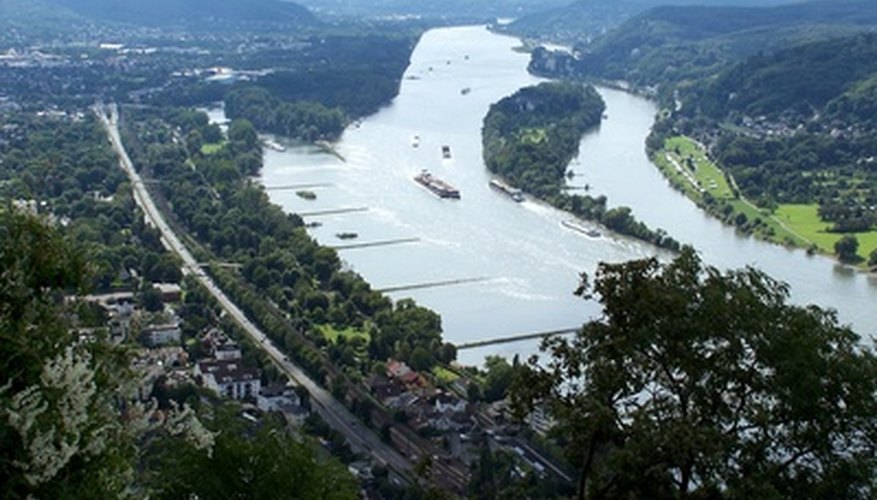The river Rhine provides drinking water for around 20 million people and is the 40th-largest river in the world. Unfortunately, it is in the top 10 when it comes to the number of pollutants it carries. Measures have been taken to preserve the remaining wildlife and there are positive signs that a new ecosystem is re-emerging.
History
The Rhine was a wild, salmon-rich stream two centuries ago and sustained a variety of marine and terrestrial fauna. As human habitation along its banks increased, so did the pollutants discharged into it. By the end of the last century there were around 44 fish species. The polluting of the river culminated in the 1986 Sandoz chemical spill in Basel, Switzerland.
- The Rhine was a wild, salmon-rich stream two centuries ago and sustained a variety of marine and terrestrial fauna.
- The polluting of the river culminated in the 1986 Sandoz chemical spill in Basel, Switzerland.
Regeneration
In 1992, European Union (EU) lawmakers passed the Flora, Fauna, Habitat directive, or FFH. By signing up to the FFH, EU countries promise to preserve and protect natural habitats such as lakes, rivers and streams. The environmental ministry of North-Rhine Westphalia has set aside 30 per cent of the Rhine River under the FFH directive. Thanks to the increased ecological efforts to rehabilitate the Rhine, some areas of the river have seen migratory species such as salmon returning and surviving.
- In 1992, European Union (EU) lawmakers passed the Flora, Fauna, Habitat directive, or FFH.
- By signing up to the FFH, EU countries promise to preserve and protect natural habitats such as lakes, rivers and streams.
Lower Rhine
The Lower Rhine flows between Bonn, Germany, and the North Sea at Hoek van Holland, Netherlands. Dutch scientists found that the fish fauna was dominated by cyprinids such as carp, minnows, chubs and tench, according to an article in Regulated Rivers: Research & Management, 2001. They also reported that migrating fish species were either scarce or extinct.
Middle Rhine
The Middle Rhine is solely German and flows between Bingen and Bonn. The 65-km section of the river between Koblenz and Bingen is known as the Rhine Gorge and has been listed as a UNESCO World Heritage Site since June 2002. The flora and fauna demonstrate a large diversity and include rare and endemic species such as the white-backed woodpecker, red kite, long-eared owl and icterine warbler.
Upper Rhine
The Upper Rhine is the section of the Rhine between Basel, Switzerland, and Bingen, Germany. The section of river flowing between France and Germany plays host to at least 36 species of fish. These include sunfish, rainbow trout, roach, carp, silver bream, burbot and stone loach. Because the groundwater in the river's floodplain has fallen, it has ceased to provide the necessary water for the survival of the alluvial vegetation. The animals depending on this food source have also subsequently gone.
- The Upper Rhine is the section of the Rhine between Basel, Switzerland, and Bingen, Germany.
- The section of river flowing between France and Germany plays host to at least 36 species of fish.
